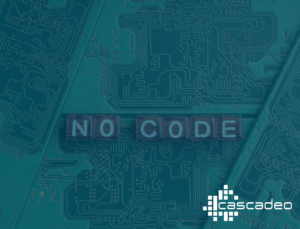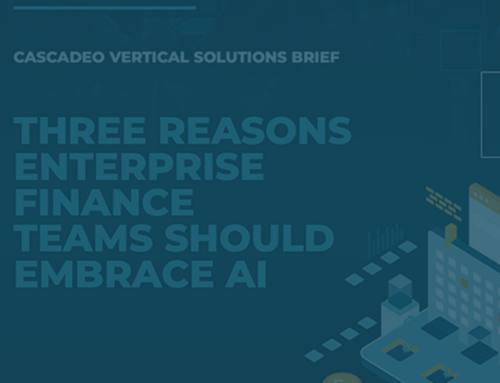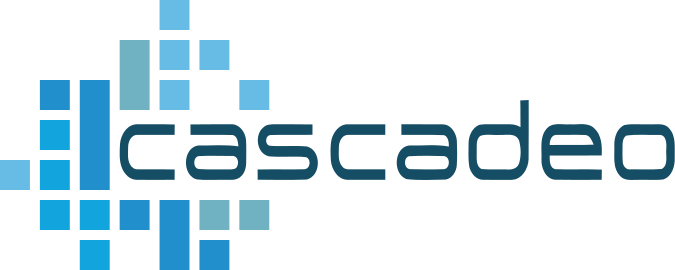
Low code and no code seem like complicated concepts, but the apps they describe can simplify computing functions when they’re integrated in a composable, cloud-native architecture.
Learn How a DIY Ethos Can Inform Your Tech Stack Choices
If you’ve ever done DIY home repair, you’re familiar with the two first principles: find the right tools, and know your limitations. An ordinary hammer and ratchet set won’t get you very far when you’re trying to achieve the outcomes of professionals with nail guns, sophisticated cutting and drilling equipment, and decades of experience using them. You can’t tile a floor without the appropriate trowel and mastic, plus some basic knowledge of how to measure, cut, and align tile. When you run into these limitations, you have two choices: Find a product that does a few foundational steps for you, or call in an expert. Otherwise you end up living in a social media cautionary tale.

Likewise, you probably shouldn’t DIY app dev. Your options, then, when it’s time to grow and evolve, are to hire the job out, expand your staff, or implement packaged components where much of the work has already been done. Enter the low code / no code concept.
As terminology, “low code” and “no code” have long seemed inaccessible and complicated, implying some kind of magical creative process whereby coded functions simply occur without any code having been written. But the products they describe are the opposite: pre-packaged IT components that allow non-developers to implement sophisticated computing solutions without writing code (no code) or with minimal code (low code). The vast majority are SaaS enterprise tools employed within composable architectures to conduct activities that can be entirely or partially generalized from one enterprise to another, and specialized via drag-and-drop visual configurations (no code), minor coding customizations (low code), or a combination of the two. No code and low code applications do, indeed, involve code, but that code is already completed when the app is installed in your architecture. No code applications run as they are, out-of-the-box, with limited capacity for customization via drag-and-drop interfaces. Low code, however, offers the best of both worlds: varying levels of customization with a pre-coded foundation to build upon. And according to Forrester, they accelerate app development considerably over traditional methods.
Low code and no code SaaS products go hand-in-hand with composability, which, you’ll remember, describes a cloud-native IT infrastructure made up of many small modules that can be rearranged and rebuilt as your company grows, adapts to the market, or launches new products and initiatives, rather than a staid system that takes down the whole operation when one function fails or needs to be replaced to accommodate modernization or growth. In one type of composable architecture, a system is made up of many custom-developed apps, created either by your in-house DevOps team or a contracted pro-serve specialist. In another, pre-packaged apps are selected from digital marketplaces and assembled, added, or exchanged for existing tools. Most infrastructures will consist of a carefully assembled combination of the two, as it’s unlikely that an enterprise’s full application stack requirements can be addressed by existing low code and no code offerings—some amount of custom app dev will likely remain necessary for all but the simplest of operations. All three structures offer maximum agility and stability when they’re deployed in the cloud.
In the midst of a developer talent shortage, particularly in cloud-native technologies, low code and no code tools can be a key reason to embrace cloud transformation, allowing you to access adaptable, cutting-edge tools without retraining your staff or conducting a talent search in a lean labor market. It’s not quite DIY at the enterprise level, but it’s not far off. Some end-user no code applications, like drag-and-drop e-commerce store tools or prepared website themes that operate outside of a user’s fully owned cloud environment, in fact, do serve as DIY cloud operations. (WordPress.com is hosted on Azure, for example. Wix is on AWS.)
But for larger enterprises, incorporating low code and no code apps in your composable architecture most likely means integration of selections from a digital marketplace via API calls by your DevOps team or pro-serve support. Your non-IT staff may be able to independently customize no code apps to support their particular departmental needs, giving them the autonomy to build and adapt their own tools; for low code options, your staff will finalize the details of a nearly-complete application to your specifications. And of course expert help from Cascadeo can aid in building your composable architecture, whether with low code, no code, or fully custom-built cloud-native apps to bring you the agility and scalability your growing enterprise requires and the resiliency your customers demand.




